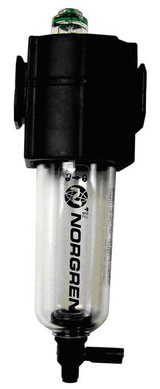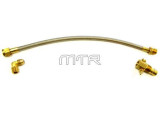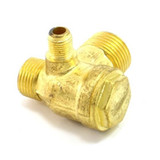Direct-Drive vs. Belt-Drive Air Compressors
Which Air Compressor Is Better?
When it comes to choosing an air compressor, one of the crucial decisions you need to make is whether to go for a direct-drive or a belt-drive model. Both types of air compressors have their advantages and disadvantages, and understanding the differences between them can help you make an informed decision. In this blog post, we will compare direct drive and belt drive air compressors to help you determine which one is better suited for your needs.
Direct-Drive Air Compressors
Direct-drive air compressors are compact and lightweight, making them suitable for small- to medium-sized applications. They are designed with the motor directly connected to the compressor pump, eliminating the need for belts or pulleys. This direct connection results in a more efficient transfer of power from the motor to the pump, allowing for a more compact design and efficient air delivery.
Advantages of Direct-Drive Air Compressors:
- Compact and Lightweight: Direct-drive air compressors are smaller and lighter compared to belt-drive air compressors, making them portable and easy to move around.
- Simple Maintenance: With fewer components, direct-drive air compressors are generally easier to maintain and require less maintenance compared to belt-drive air compressors.
- Higher Efficiency: The direct connection between the motor and pump in a direct-drive air compressor results in higher efficiency and better performance, as there are no energy losses due to belts or pulleys.
- Cost-Effective: Direct-drive air compressors are usually more affordable compared to belt-drive air compressors, making them a budget-friendly option for DIYers or occasional users.
Disadvantages of Direct-Drive Air Compressors:
- Limited Power: Direct-drive air compressors are typically suitable for small- to medium-sized applications and may not provide enough power for heavy-duty tasks or industrial use.
- Higher Noise Levels: Direct-drive air compressors tend to be louder compared to belt drive air compressors due to the direct connection between the motor and pump, which can result in higher noise levels during operation.
Belt-Drive Air Compressors
Belt-drive air compressors are larger and heavier compared to direct-drive air compressors, and are typically used in more demanding applications where higher power and durability are required. They are designed with a motor connected to the compressor pump via belts and pulleys which allows for greater flexibility in adjusting the pump's speed and performance.
Advantages of Belt-Drive Air Compressors:
- Higher Power and Durability: Belt-drive air compressors are capable of providing higher power and are suitable for heavy-duty tasks and industrial use. They are designed to handle continuous operation and are known for their durability and longevity.
- Quieter Operation: Belt-drive air compressors tend to be quieter compared to direct-drive air compressors, as the belts and pulleys help to dampen the noise during operation.
- Flexibility: The use of belts and pulleys in belt-drive air compressors allows for greater flexibility in adjusting the pump's speed and performance, making them suitable for a wide range of applications.
Disadvantages of Belt-Drive Air Compressors:
- Larger and Heavier: Belt-drive air compressors are larger and heavier compared to direct-drive air compressors, making them less portable and more difficult to move around.
- Higher Maintenance: Belt-drive air compressors typically require more maintenance compared to direct-drive air compressors, as the belts and pulleys may need periodic adjustments or replacements.
- Higher Cost: Belt-drive air compressors are generally more expensive compared to direct-drive air compressors, requiring a more significant investment upfront.
Both direct-drive and belt-drive air compressors have their pros and cons, and the right choice depends on your specific needs and requirements. Generally, belt-driven air compressors will produce much more cubic feet per minute (CFM) than direct-drive compressors, where occasional use and portability are the main factors. If you’re in construction (roofer, framer, etc.) or run an auto body shop, a belt-driven air compressor is the only way to go. Otherwise, a direct-drive compressor may be a good option for you.
Recent Posts
-
Part of the Week: Understanding the In-Line Lubricator
Welcome back to our Part of the Week series, where we delve into the world of air compressor part …Apr 30, 2024 -
Part of the Week: Unveiling the Vital Role of Transfer Tubes in Air Compressors!
Welcome back to Master Tool Repair's Part of the Week series! This week, we're shining a spotligh …Apr 22, 2024 -
Part of the Week: The Mighty Check Valve
Welcome to our new "Part of the Week" series! This week, we're shining the spotlight on a crucial …Apr 16, 2024




